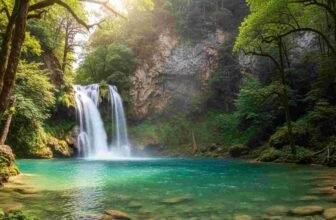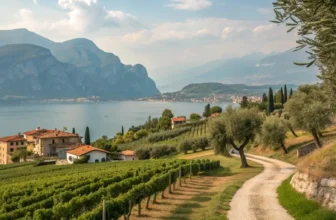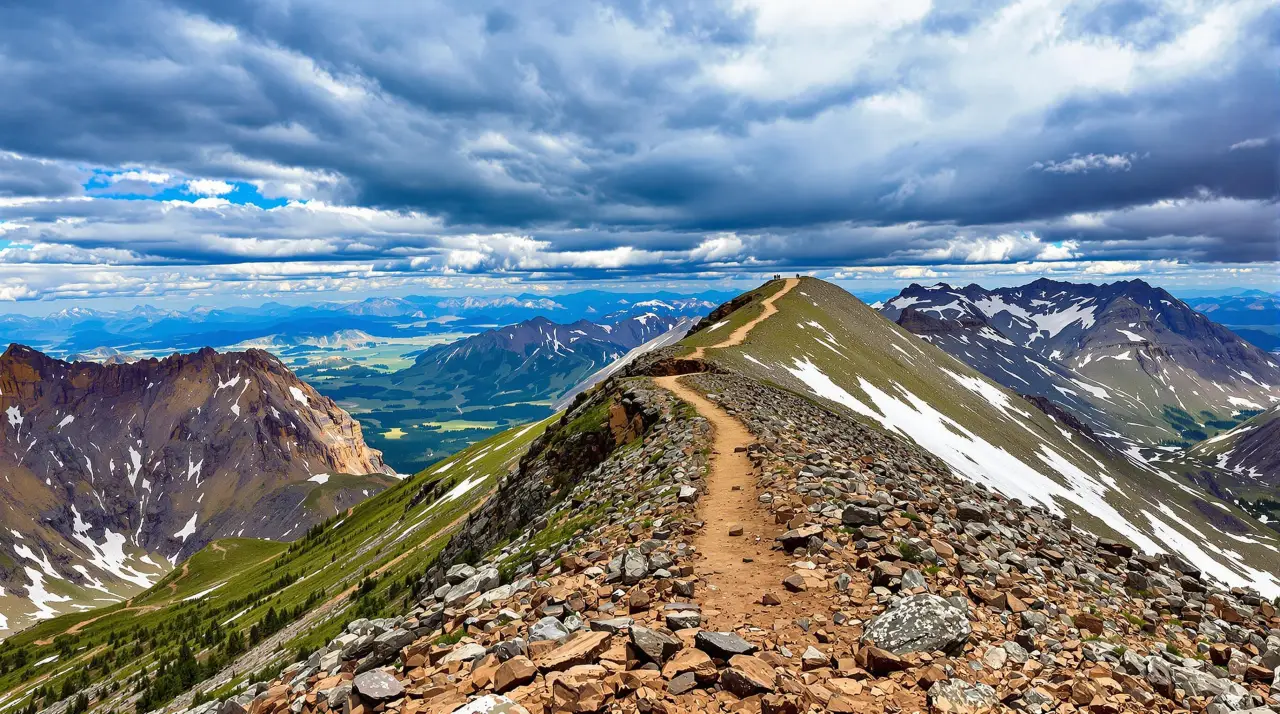
There’s something about the call of the wild that stirs your soul, isn’t there? The crunch of boots on a rugged trail, the promise of untamed beauty just around the bend—it’s the kind of magic that only the great outdoors can offer.
If you’ve ever felt the pull to escape the every day and lose yourself in nature’s grandeur, this is your sign to answer it.
From jaw-dropping vistas to once-in-a-lifetime adventures, these trails aren’t just hikes—they’re experiences that change you. Ready to lace up your boots? Let’s explore the trails that will leave you in awe and yearning for more.
1. Appalachian Trail
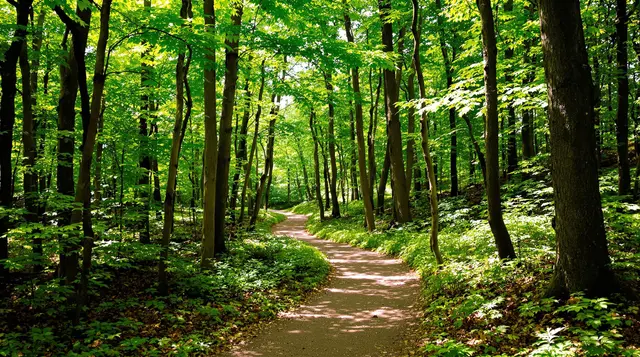
The Appalachian Trail (AT) isn’t just a hike; it’s a journey through some of America’s most diverse landscapes. Spanning over 2,190 miles and crossing 14 states, this trail is a test of endurance, but also a profound connection to nature. From the lush green forests of Georgia to the rocky peaks of Maine, the AT offers challenges and rewards in equal measure. Completing it, whether as a thru-hike or section hike, is a badge of honor for many adventurers.
What makes the AT truly special is its community spirit. Hikers often find themselves part of a larger family, sharing trail stories, camping spots, and tips for navigating tough sections. I’ll never forget meeting “Trail Angels” who left snacks and water at some of the more remote sections—they’re the unsung heroes of this legendary trek. The camaraderie among hikers is unmatched, and it’s easy to see why people keep coming back to this trail.
Pro tip: The AT isn’t about racing to the finish line. It’s about taking in every sunset, every forest glade, and every challenging ascent. Whether you tackle a weekend section or aim for the whole thing, the AT leaves a mark on your soul.
Quick Facts & Tips:
- Best months to visit: March through October (depending on your section).
- Difficulty: Moderate to very challenging, depending on terrain.
- Must-see spots: McAfee Knob (Virginia), Smoky Mountains, White Mountains (New Hampshire).
- Permits: Not required for most sections, but some areas, like the Great Smoky Mountains, require permits.
2. Pacific Crest Trail

The Pacific Crest Trail (PCT) is the stuff of dreams for many hikers. Stretching over 2,650 miles from California’s border with Mexico to Washington’s border with Canada, the PCT takes you through deserts, alpine mountains, and lush forests. Each step offers new terrain, and no two days are ever quite the same. It’s a hike that demands respect, preparation, and a touch of wild curiosity.
What stuck with me most about the PCT is the sheer solitude. When I crossed into the Sierra Nevada section, I felt like I was walking through a postcard—majestic peaks, clear alpine lakes, and the kind of silence that makes you feel truly alive. But solitude doesn’t mean loneliness. Along the way, you meet hikers who become lifelong friends, sharing stories under the stars.
This trail isn’t for the faint of heart—it’s a marathon, not a sprint. You’ll need to be ready for long stretches without water, unpredictable weather, and the mental grit to keep pushing forward. But trust me, every blister, every ache is worth the breathtaking beauty.
Quick Facts & Tips:
- Best months to visit: April to September (northbound); May to November (southbound).
- Difficulty: Strenuous, with long stretches requiring careful resupply planning.
- Must-see spots: Mount Whitney (California), Crater Lake (Oregon), and Goat Rocks Wilderness (Washington).
- Permits: Required for thru-hikers and certain sections.
3. John Muir Trail

The John Muir Trail (JMT) might be shorter than its counterparts at 211 miles but don’t underestimate its beauty. Named after the father of the national parks, this trail offers some of the most stunning scenery in the Sierra Nevada mountains. It runs from Yosemite Valley to Mount Whitney, taking you past crystalline lakes, granite peaks, and lush meadows.
What I love most about the JMT is its accessible grandeur. You don’t need to commit months to experience it, and yet it feels like an epic adventure. Hiking here, I felt like I was walking in the footsteps of John Muir himself, seeing the wild America he fought to protect. Every corner brings something new—a hidden waterfall, a ridge with panoramic views, or the sight of deer grazing in the distance.
If you’re someone who appreciates solitude and wilderness, the JMT is a must. It’s a chance to leave the modern world behind and reconnect with nature in its purest form.
Quick Facts & Tips:
- The best months to visit: are July to September (after the snow melts).
- Difficulty: Challenging, especially at high altitudes.
- Must-see spots: Half Dome, Evolution Basin, Mount Whitney Summit.
- Permits: Required; book months in advance.
4. Continental Divide Trail
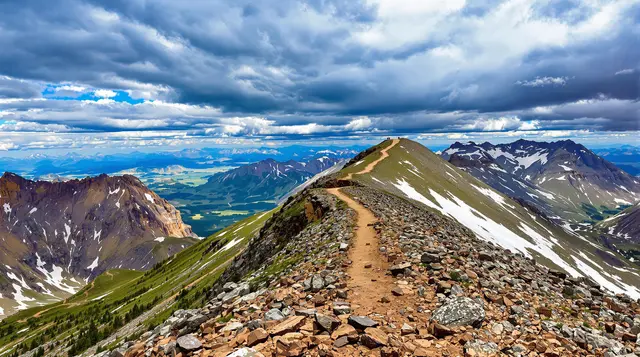
The Continental Divide Trail (CDT) is the wildest of the long trails, running 3,100 miles along the spine of the Rockies. It’s not as well-marked or crowded as the AT or PCT, which makes it a haven for seasoned hikers looking for solitude and a challenge. From New Mexico’s deserts to Montana’s glacier-studded peaks, the CDT is as diverse as it is demanding.
What stands out about the CDT is its rawness. You’re not just hiking a trail; you’re navigating a wilderness. I remember one stretch in Colorado where I didn’t see another soul for days—it was just me, the mountains, and the occasional elk. That level of isolation can be intimidating, but it’s also deeply rewarding.
The CDT teaches you self-reliance. It’s a trail for those who embrace the unknown and want to test their limits. But don’t worry; the scenery will keep you motivated even when the going gets tough.
Quick Facts & Tips:
- Best months to visit: April to October (varies by section).
- Difficulty: Extremely challenging; not recommended for beginners.
- Must-see spots: Glacier National Park, Wind River Range, San Juan Mountains.
- Permits: Required for certain sections (e.g., national parks).
5. Zion Narrows Trail
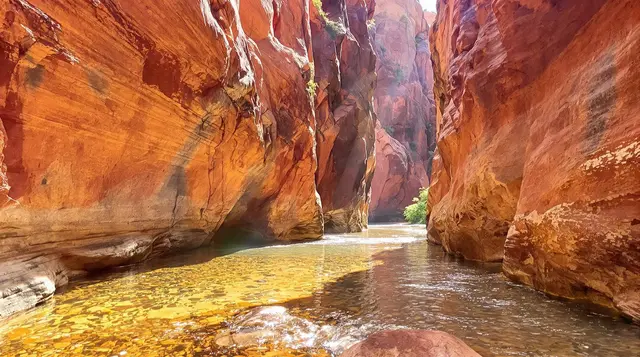
The Zion Narrows Trail is one of the most unique hikes in the country. This isn’t your typical mountain trail—it’s a slot canyon trek, with much of the route requiring wading or even swimming through the Virgin River. Set in Utah’s Zion National Park, the Narrows is a surreal journey through towering sandstone walls that seem to glow in the sunlight.
The first time I hiked the Narrows, I was blown away by the otherworldly atmosphere. The sound of the rushing water, the cool shade of the canyon, and the play of light on the rock walls made it feel like I was in a scene from a fantasy novel. But don’t let the beauty fool you—it’s a physically demanding hike, especially if you tackle the 16-mile top-down route.
Despite the challenges, the Narrows is a hike that anyone with a sense of adventure should experience. Just make sure to check the weather—flash floods can turn this magical canyon into a dangerous trap.
Quick Facts & Tips:
- The best months to visit are summer and fall (low water levels).
- Difficulty: Moderate to strenuous, depending on water conditions.
- Must-see spots: Wall Street, Big Springs, Orderville Canyon.
- Permits: Required for the top-down route.
6. Kalalau Trail

The Kalalau Trail is a breathtaking journey along Kauai’s Na Pali Coast in Hawaii. This 11-mile trail (one way) is not for the faint of heart, but those who tackle it are rewarded with some of the most stunning coastal scenery in the world. Towering cliffs, lush valleys, and the turquoise waters of the Pacific Ocean make every step worth it.
I’ll never forget the moment I reached Kalalau Beach at the end of the trail—it felt like discovering a hidden paradise. But the journey there is just as unforgettable, with views that make you stop and take it all in. The trail passes through jungle-like terrain and crosses streams, keeping you immersed in Hawaii’s untamed beauty.
Hikers should be prepared for slippery conditions, narrow paths, and a good dose of adrenaline, especially at the “crawler’s ledge” section. But for those who can handle it, this hike is the definition of epic.
Quick Facts & Tips:
- The best months to visit: are May to September (dry season).
- Difficulty: Strenuous, with challenging terrain.
- Must-see spots: Hanakapiai Falls, Kalalau Beach, Crawler’s Ledge.
- Permits: Required for overnight stays beyond Hanakapiai Valley.
7. Bright Angel Trail (Grand Canyon)

The Bright Angel Trail is the Grand Canyon’s most iconic route, offering a stunning descent from the South Rim into the canyon’s depths. This 9.5-mile (one-way) trail takes you through layers of geological history, with jaw-dropping views at every switchback.
What I love most about the Bright Angel Trail is its accessibility—you don’t have to be an expert to enjoy it. The trail is well-maintained and features rest stops with water along the way. When I hiked it, I was amazed by how the colors of the canyon walls changed throughout the day, from golden hues in the morning to fiery reds in the afternoon.
Be warned, though: the way down is a breeze, but the hike back up is a grueling challenge. Take it slow, stay hydrated, and savor the incredible views—it’s a workout, but one you won’t regret.
Quick Facts & Tips:
- Best months to visit: Spring (March-May) and Fall (September-November).
- Difficulty: Moderate to strenuous, especially on the return climb.
- Must-see spots: Indian Garden, Plateau Point, Colorado River.
- Permits: Not required for day hikes; needed for overnight stays.
8. Half Dome Trail (Yosemite)
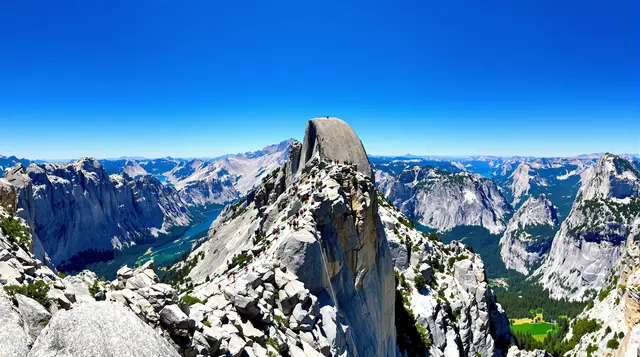
The Half Dome Trail in Yosemite National Park is the ultimate bucket-list hike. This 16-mile round trip takes you from Yosemite Valley to the summit of Half Dome, a 4,800-foot ascent that challenges both your legs and your nerves. The final section, with its famous cables, is not for the faint of heart.
The best part of this hike is the sense of accomplishment when you reach the top. Standing on the summit, looking down at the valley and across to the Sierra Nevada, is a feeling like no other. The trail itself is no slouch either, passing through landmarks like Vernal Falls and Nevada Falls.
If you’re considering Half Dome, preparation is key. Train for the elevation gain, bring gloves for the cables, and start early to beat the crowds. Trust me, the effort is worth it—it’s an adventure you’ll never forget.
Quick Facts & Tips:
- Best months to visit: May to October (permits required for cables).
- Difficulty: Strenuous, with a steep ascent and exposed summit.
- Must-see spots: Vernal Falls, Nevada Falls, Half Dome Summit.
- Permits: Required for the cable section (lottery system).
9. Wonderland Trail
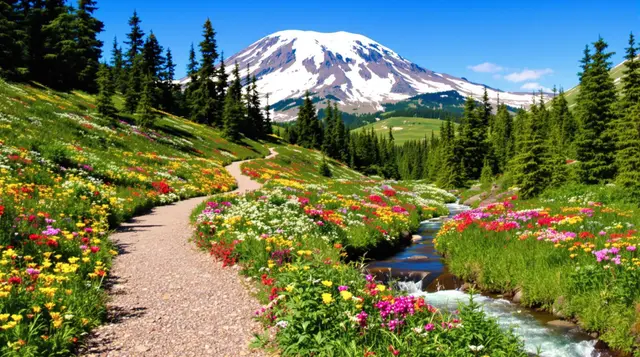
The Wonderland Trail encircles Mount Rainier in Washington, offering 93 miles of some of the most varied terrain you’ll ever see. From alpine meadows to dense forests, glaciers, and rivers, this trail is a showcase of the Pacific Northwest’s beauty.
One thing that struck me about the Wonderland Trail was its constant surprises. Every day felt like a new adventure—one moment, I was hiking through fields of wildflowers, and the next, I was crossing a suspension bridge over a roaring river. The trail is challenging, with lots of elevation gain, but the rewards are endless.
This is a trek for those who love to plan. Campsites require reservations, and weather can change in an instant. But if you’re up for the challenge, the Wonderland Trail will leave you in awe.
Quick Facts & Tips:
- The best months to visit: are July to September (after the snow melts).
- Difficulty: Strenuous, with significant elevation changes.
- Must-see spots: Sunrise, Indian Bar, Spray Park.
- Permits: Required for camping (reservations needed).
10. Angels Landing Trail
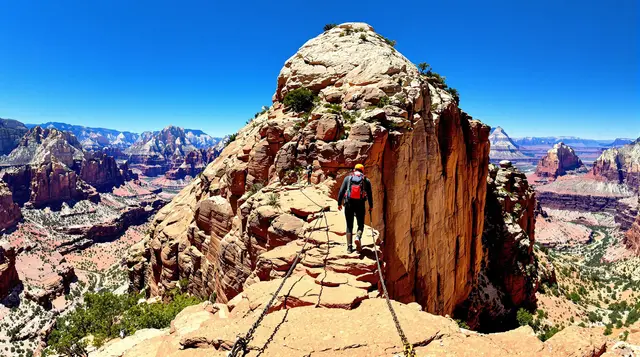
The Angels Landing Trail in Zion National Park is as famous for its views as it is for its thrill factor. This 5.4-mile round trip takes you up a steep path to a narrow ridge, with sheer drop-offs on either side. It’s not for those afraid of heights, but the payoff is a panoramic view of Zion Canyon that takes your breath away.
When I hiked Angels Landing, I’ll admit I was nervous about the final stretch. But the chains bolted into the rock gave me just enough confidence to push through. The sense of achievement when you reach the summit is indescribable—it’s a moment of triumph over your fears.
Safety is key here. Take your time, wear good shoes, and don’t attempt the trail in bad weather. It’s an exhilarating hike, but only if you’re prepared.
Quick Facts & Tips:
- The best months to visit are spring and Fall (cooler temperatures).
- Difficulty: Moderate to strenuous, with exposed sections.
- Must-see spots: Scout Lookout, Angels Landing Summit.
- Permits: Required (lottery system).
11. The Wave (Coyote Buttes North)
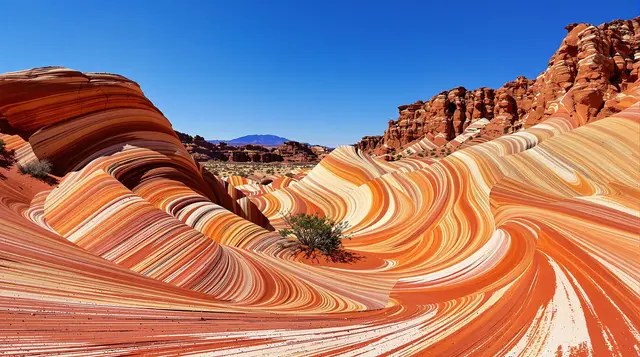
Few hikes can match the Wave for its surreal beauty. Located in the Paria Canyon-Vermilion Cliffs Wilderness, this 6-mile round-trip hike leads to undulating sandstone formations that look like they belong on another planet. Its swirls of orange, red, and gold make it a photographer’s dream and a hiker’s paradise.
What stands out about this trail isn’t just the destination but the journey itself. Trekking through the desert terrain feels like an adventure into the unknown, with every bend offering a new surprise. Be prepared, though—there’s no marked trail, and navigation skills are a must.
The Wave is one of the most exclusive hikes in the world, with a permit system that allows only a small number of hikers per day. If you’re lucky enough to snag one, it’s an experience you’ll treasure forever.
Quick Facts & Tips:
- The best months to visit: are spring and Fall (cooler temperatures).
- Difficulty: Moderate, with unmarked terrain.
- Must-see spots: The Wave, Sand Cove, Second Wave.
- Permits: Required (lottery system).
12. Bryce Canyon Rim Trail
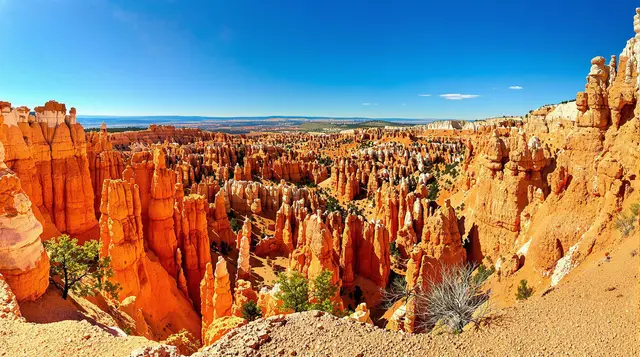
The Bryce Canyon Rim Trail is a gentle yet captivating hike that runs along the edge of Bryce Canyon in Utah. Stretching 5.5 miles one way, this trail offers stunning views of the hoodoos—those peculiar, spire-like rock formations that seem straight out of a fantasy world.
What I loved most about this trail was its ease of access. You can choose to hike the entire length or just sections between viewpoints like Sunrise, Sunset, and Inspiration Points. As the light changes throughout the day, the hoodoos glow in shades of pink, orange, and red, creating a visual spectacle you’ll never forget.
This trail is perfect for families or those who want to enjoy nature without the intensity of a strenuous climb. Bring your camera—Bryce Canyon’s beauty is something you’ll want to remember forever.
Quick Facts & Tips:
- The best months to visit: are spring and Fall (cool temperatures).
- Difficulty: Easy to moderate.
- Must-see spots: Inspiration Point, Sunrise Point, Fairyland Loop connection.
- Permits: Not required.
13. Acadia National Park’s Precipice Trail

The Precipice Trail in Maine’s Acadia National Park is short but thrilling. This 2.6-mile loop takes you up Champlain Mountain via a steep climb that involves iron rungs, ladders, and exposed ledges. If you love a hike with a bit of adrenaline, this one’s for you.
The trail rewards your courage with stunning views of the Atlantic Ocean and the surrounding forest. On my visit, I remember pausing midway up the iron rungs, not just to catch my breath but to soak in the sheer beauty of the coastline below. It’s the kind of hike that keeps your heart racing and your spirit soaring.
This is not a trail for everyone—those with a fear of heights or limited mobility should steer clear. But for the bold, it’s a short yet unforgettable adventure.
Quick Facts & Tips:
- Best months to visit: Late summer to early fall (avoid slippery conditions).
- Difficulty: Strenuous and technical.
- Must-see spots: Champlain Mountain summit, coastal views.
- Permits: Not required.
14. Maroon Bells Four Pass Loop
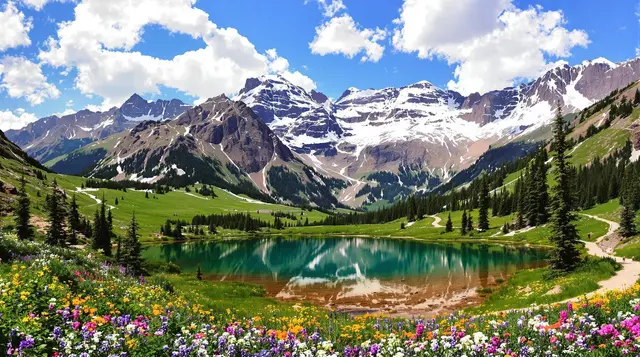
Colorado’s Maroon Bells Four Pass Loop is a 28-mile circuit that takes you through some of the most breathtaking alpine scenery in the Rockies. With four mountain passes to cross, this hike is as challenging as it is beautiful.
What makes this trail special is its constant variety. You’ll traverse wildflower meadows, crystal-clear streams, and dramatic mountain vistas. The changing scenery keeps you motivated, even when the trail gets tough. I hiked it in mid-summer and was floored by the sheer abundance of wildflowers—it was like walking through a natural kaleidoscope.
This loop demands preparation. Altitude, weather, and long days on the trail can test even experienced hikers. But those who complete it often call it one of the best hiking experiences of their lives.
Quick Facts & Tips:
- Best months to visit: are July to September (snow-free).
- Difficulty: Strenuous, with high-altitude passes.
- Must-see spots: Maroon Bells, Snowmass Lake, Buckskin Pass.
- Permits: Required for overnight camping.
15. Mount Whitney Trail

The Mount Whitney Trail is your ticket to standing on the highest point in the contiguous United States. This 22-mile round trip ascends California’s Mount Whitney, which towers at 14,505 feet. It’s a grueling hike, but the sense of achievement at the summit is unparalleled.
What struck me most was the diversity of the trail. Starting in the forested Whitney Portal, you climb past alpine lakes and rocky switchbacks before reaching the stark, otherworldly summit. The views from the top are simply breathtaking—it feels like you’re standing on the roof of the world.
This hike is no joke. The altitude and distance make it a serious challenge, even for seasoned hikers. But for those who prepare properly, it’s a once-in-a-lifetime adventure.
Quick Facts & Tips:
- Best months to visit: are June to September.
- Difficulty: Very strenuous, with high altitude.
- Must-see spots: Trail Camp, Whitney Summit, Lone Pine Lake.
- Permits: Required (lottery system).
16. Havasu Falls Trail
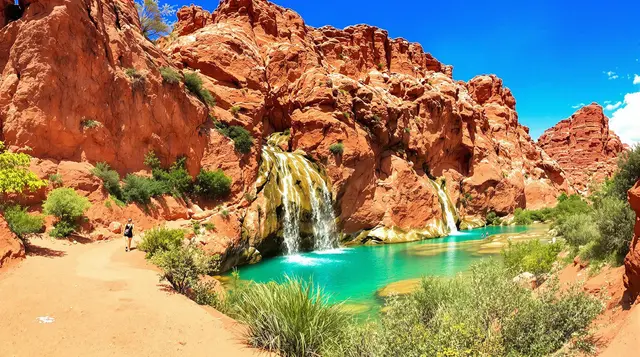
The Havasu Falls Trail leads to one of the most iconic waterfalls in the United States. Located on the Havasupai Indian Reservation in Arizona, this 10-mile hike (one way) takes you to turquoise waterfalls set against red rock canyons—a contrast that feels almost magical.
The trail itself is fairly straightforward, but the destination steals the show. When I first saw Havasu Falls, I was completely awestruck. The vibrant blue water is almost surreal, and camping near the falls offers a serene escape you won’t want to leave.
Permits are highly sought after, so plan well in advance. And remember to pack plenty of water—this hike can get scorching hot.
Quick Facts & Tips:
- The best months to visit are spring and Fall.
- Difficulty: Moderate, with steep sections.
- Must-see spots: Havasu Falls, Mooney Falls, Beaver Falls.
- Permits: Required (reservation system).
17. Glacier National Park’s Highline Trail
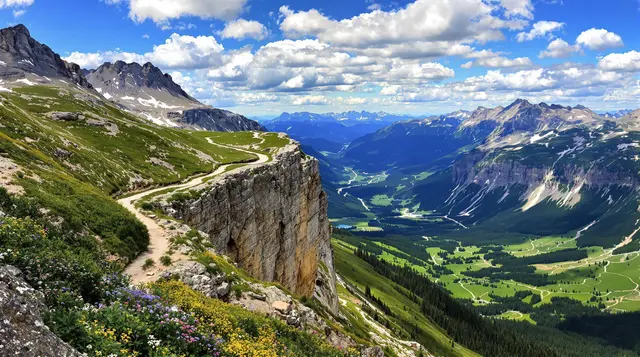
The Highline Trail in Montana’s Glacier National Park is a bucket-list hike for lovers of big views and wildlife. This 12-mile (one-way) trail runs along the Garden Wall, offering stunning vistas of the mountains and valleys below.
One of the most thrilling aspects of the Highline Trail is its proximity to wildlife. On my hike, I spotted mountain goats, marmots, and even a bear in the distance. The trail’s narrow sections, with sheer drops to one side, add a dash of adrenaline to the experience.
This trail is as rewarding as it is popular, so start early to beat the crowds. And don’t miss the optional side trip to Grinnell Glacier Overlook for an unforgettable view.
Quick Facts & Tips:
- Best months to visit: are July to September.
- Difficulty: Moderate, with some exposed sections.
- Must-see spots: Logan Pass, Garden Wall, Grinnell Glacier Overlook.
- Permits: Not required for day hikes.



